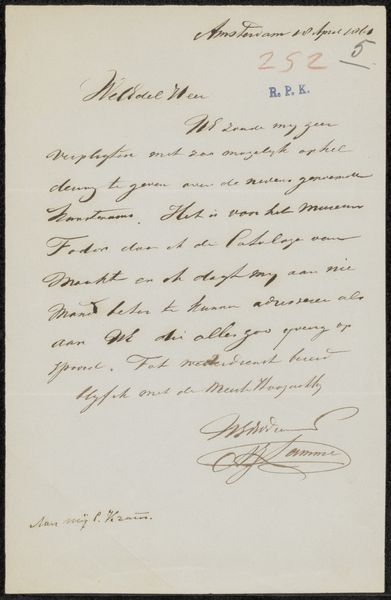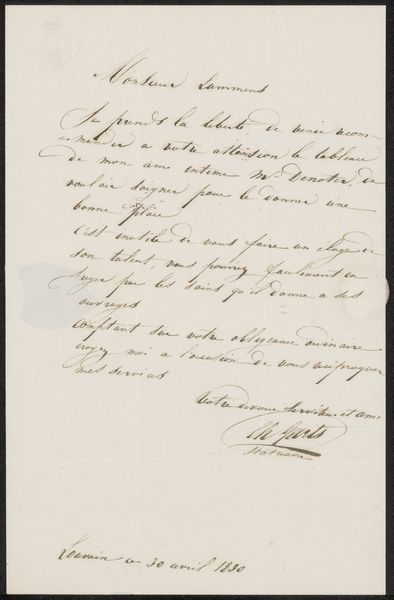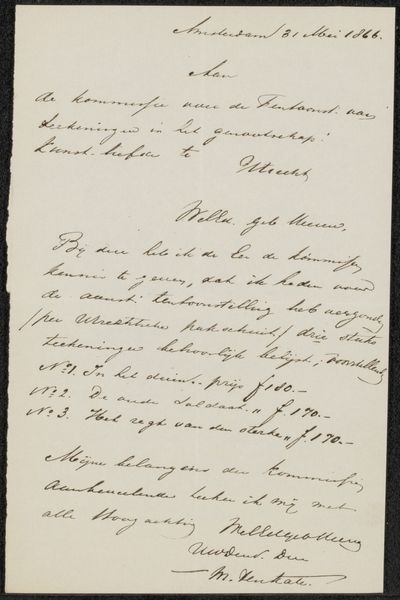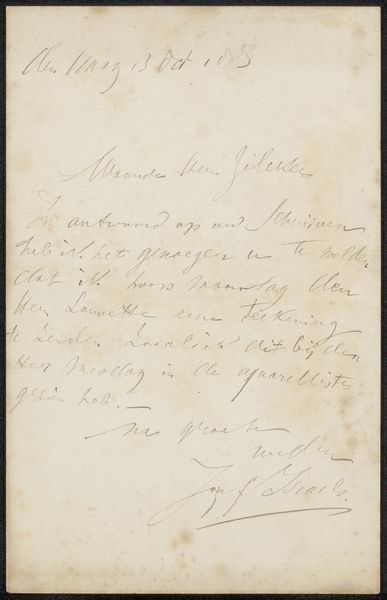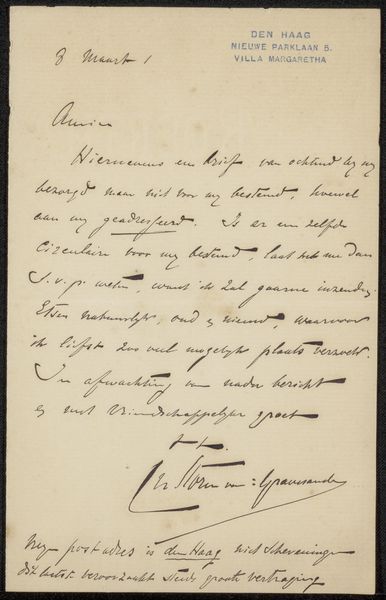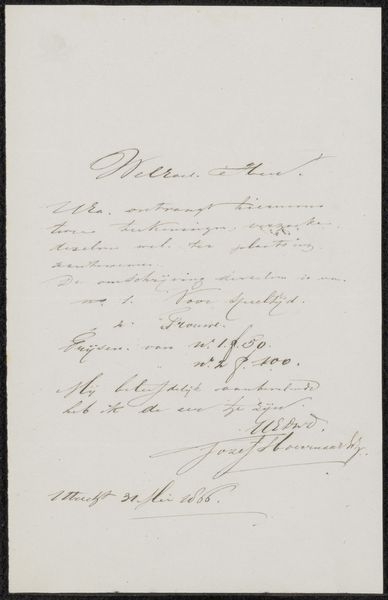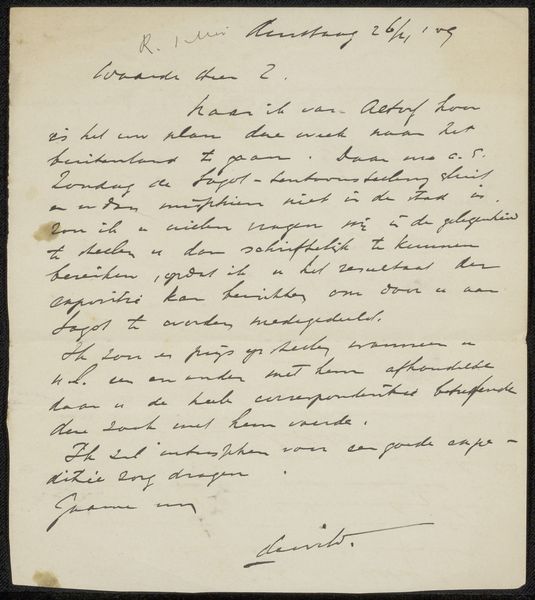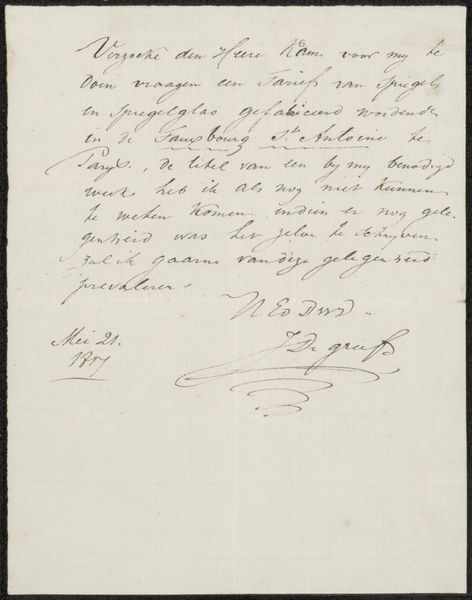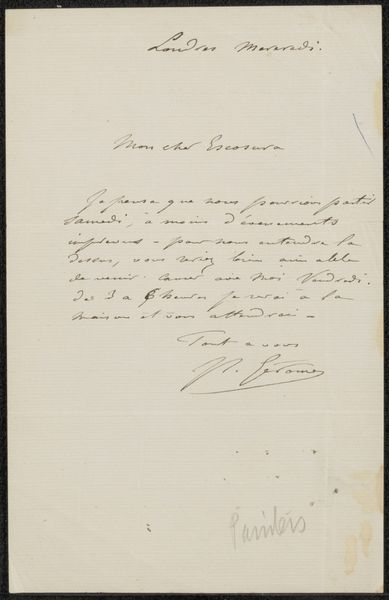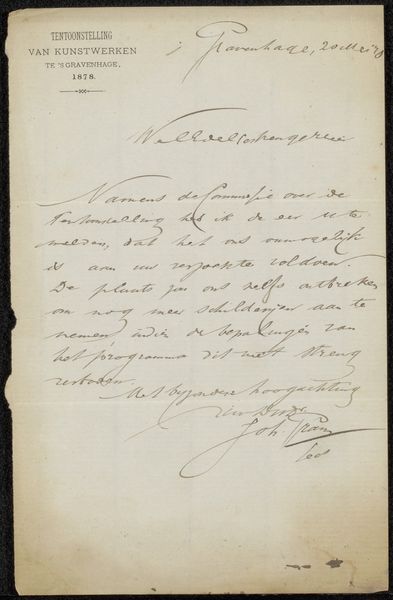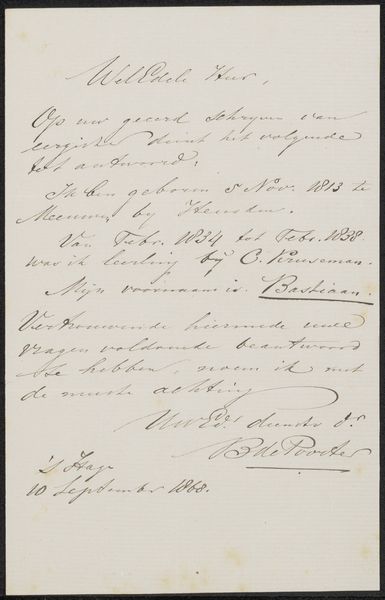
drawing, paper, ink, pen
#
drawing
#
ink drawing
#
pen drawing
#
pen sketch
#
hand drawn type
#
paper
#
ink
#
romanticism
#
pen work
#
pen
Copyright: Rijks Museum: Open Domain
Curator: Here we have Petrus Kiers' "Brief aan Christiaan Immerzeel," a piece that, intriguingly, exists between 1818 and 1875. The work is on paper, drawn with both pen and ink, a lovely sample of Romanticism held here at the Rijksmuseum. What’s your initial read? Editor: My initial impression is intimacy. The script is beautiful, but also a little rushed, suggesting a candid and urgent message, more of a fragment that gives insight into interpersonal relations of the past. Curator: Indeed! The very act of handwriting carries its own weight, doesn't it? The deliberate loops, the pressure applied, each a gesture conveying something beyond just words. Consider the repeated “o” or how he signs off as a "friend". Such marks reveal societal notions around gender roles. Editor: Exactly. Handwriting itself becomes a powerful symbol. It represents class and gender constructs around education. Think of who had the luxury to be educated, to learn elegant script in that time. Even the epistolary format signifies a world quite different than ours, when personal letters facilitated and shaped private social relations. Curator: Absolutely, and letters have always been such vehicles. But in Kiers' world, letter-writing takes on the visual power to cement personal connections. Editor: The composition draws me in. It's like reading someone's diary. The ink is quite faded too, a symbol of its journey through time and the ephemerality of human communication and relationships. Is the letter complete? It is cropped in such a way to only focus on one fragment, adding a more fragmented view of what we’d consider historical information today. Curator: It seems like just one fragment of a larger whole, yes. The beauty here, I find, is that it gives rise to contemplation: who was this person, Immerzeel, what was so special or urgent about this friendship or relationship to the writer, that the sender needed to record their thoughts to a friend? It prompts the viewers to connect the past and present, in such simple and delicate form. Editor: And it makes us think about the fragility and endurance of records—both social and personal. These sorts of small sketches become monuments and artifacts themselves. Curator: Beautifully put. A fragile, intimate monument, indeed.
Comments
No comments
Be the first to comment and join the conversation on the ultimate creative platform.
